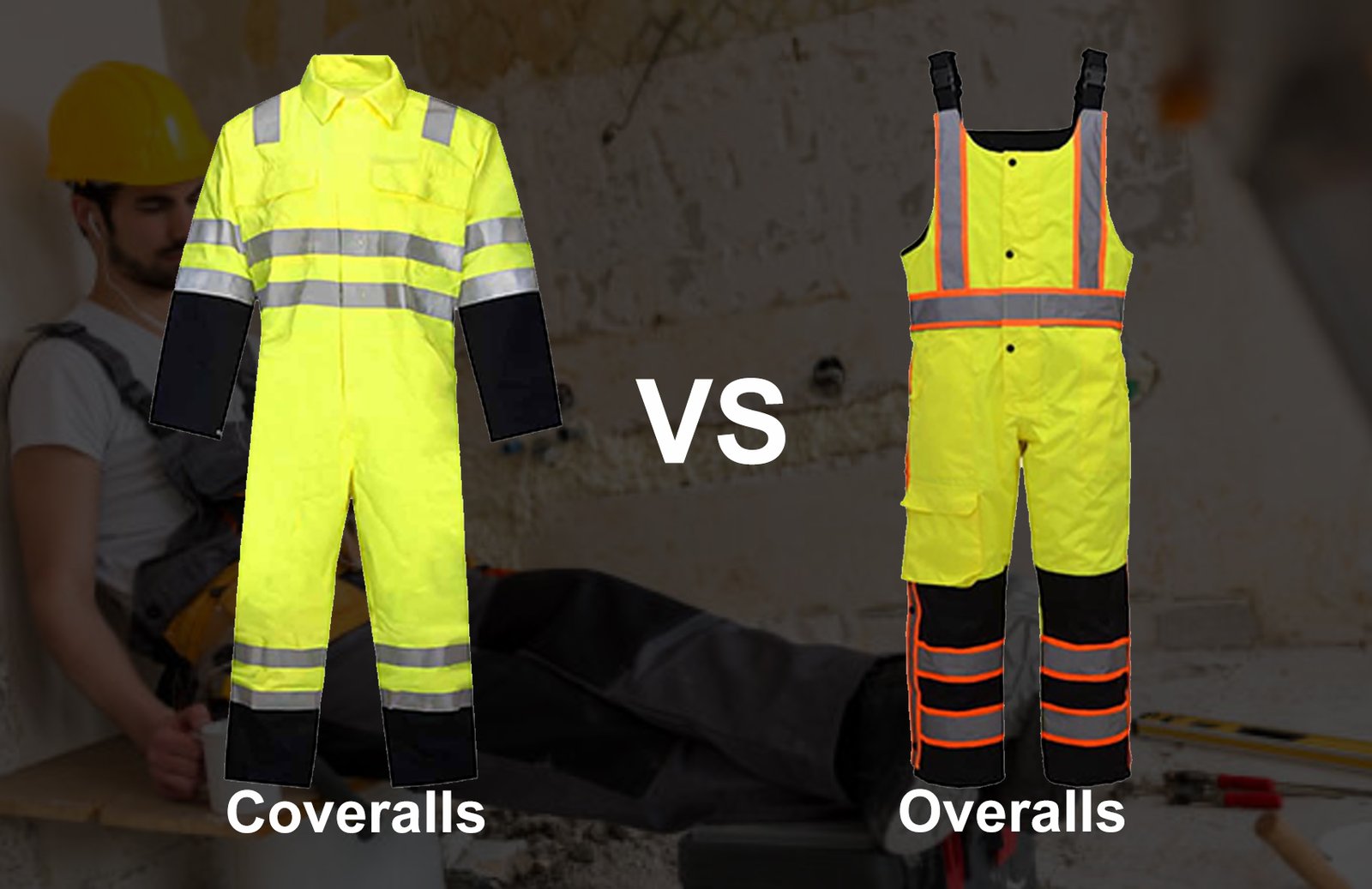What Are Overalls?
Coveralls vs Overalls,Overalls are a type of garment worn to cover both the upper and lower body. They typically consist of a pair of trousers with a front flap, or bib, that covers the chest and is supported by straps that pass over the shoulders and fasten at the back. Originally designed as workwear, overalls have evolved into a fashion statement embraced by many.
What Are Coveralls?
Coveralls, on the other hand, are one-piece garments that cover the entire body from the neck to the ankles. They often feature long sleeves and are typically worn over regular clothing for protective purposes. Coveralls are commonly used in industries such as construction, automotive repair, and manufacturing, where workers need full-body protection from dirt, debris, and other hazards.

Do You Need Coveralls vs Overalls?
Determining whether you need overalls or coveralls depends on the specific tasks you’ll be performing and the level of protection required. If you’re working in an environment with a lot of dirt, dust, or potential spills, coveralls may be the better choice since they provide full-body coverage. However, if you need more freedom of movement and don’t require as much protection, overalls might be sufficient.
Coveralls vs Overalls: Pros and Cons
Materials: Choosing the Right Fabric
Coveralls Materials
Coveralls are commonly made from durable fabrics such as cotton, polyester, or a blend of the two. These materials offer excellent protection against dirt, oil, and abrasions, making them ideal for rugged work environments. However, they may not be as breathable as other fabrics, which can lead to discomfort in hot conditions.
Overalls Materials
Overalls are available in a variety of materials, including denim, canvas, and twill. Denim overalls are popular for their durability and classic look, while canvas and twill options offer lightweight comfort and flexibility. When choosing overalls, consider the type of work you’ll be doing and the climate of your environment to ensure you select the most suitable fabric.
Industry-Specific Considerations
Different industries may have specific requirements when it comes to workwear. For example, those in the agricultural sector may prefer overalls with reinforced knees for added durability, while automotive mechanics may opt for coveralls with reflective strips for increased visibility. Before purchasing either option, research the demands of your industry to make an informed decision.
Making an Informed Decision
When deciding between coveralls and overalls, consider factors such as the level of protection needed, comfort, and durability. Assess your work environment and the tasks you’ll be performing to determine which garment will best meet your needs. Additionally, don’t forget to take into account any industry-specific requirements or regulations that may apply.
Coveralls and Overalls: Where to Buy?
Both coveralls and overalls are readily available from a variety of retailers, including department stores, workwear suppliers, and online marketplaces. When shopping for either garment, be sure to choose a reputable seller that offers high-quality products at competitive prices. Consider factors such as material, sizing, and return policies to ensure you get the best value for your money.
FAQs
Q: Can coveralls be worn over regular clothing?
A: Yes, coveralls are designed to be worn over regular clothing for added protection in work environments.
Q: Are overalls suitable for outdoor activities?
A: Yes, overalls are versatile garments that can be worn for a range of activities, including outdoor work and leisure pursuits.
Q: Do coveralls come in different sizes?
A: Yes, coveralls are available in various sizes to accommodate different body types and preferences.
Q: Are overalls considered fashionable?
A: Overalls have become increasingly fashionable in recent years, with many designers incorporating them into their collections.
Q: Can coveralls be customized with logos or branding?
A: Yes, many suppliers offer customization options for coveralls, including adding logos or branding for a professional touch.
Conclusion
In conclusion, both coveralls and overalls serve important purposes in providing protection and comfort for various tasks and industries. By understanding the differences between the two garments and considering factors such as materials, industry-specific needs, and personal preferences, you can make an informed decision about which option is right for you.
Also, Reads More>>>Event Management Software Features




